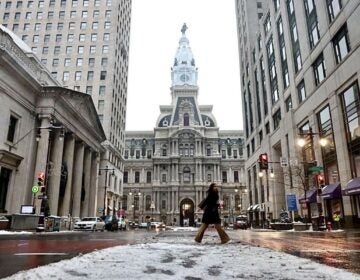Schuylkill Center protections not strong enough for some
Eleanor Smith Morris, the daughter of the woman who gave the Schuylkill Center most of its land, is joining a small group of conservationists opposed to the nonprofit’s recently signed conservation easement.
In December 2010, the Schuylkill Center signed an easement that permanently preserves 325 acres of land, the largest swath of private green space in the city. The easement gives the land three levels of protections, and 259 of the 325 acres have the highest protections, meaning they can only be used for preservation-related activities. Thirty-four acres have standard protections, which permit agriculture; and 31 acres have minimum protections, meaning buildings and barns are allowed on site.
“The easement is forever,” says Lisa Sonneborn, the Center’s communications manager. “This was a historical moment for the city.”
Karen Forbes, the Center’s interim executive director, says that she nearly teared up during the signing of the easement, thinking about how her children’s children’s children would enjoy the same open space she revels in today.
But the opposing conservationists, led by Christina Kobland, owner of the landscaping company Native Return, aren’t so pleased. The group, mostly made up of animal-rights activists, believes that all of the land not already built upon should be placed under the highest level of protection.
“It’s a step in the right direction,” says Morris about the easement. “But we don’t want those last 65 acres to be touched, either.”
Morris argues that her mother donated the land so it could be used to protect wildlife, not for agriculture or other uses, which the easement permits on acres with fewer protections. She also worries that during the upcoming remapping of the city, which will be completed in the next several years, the Planning Commission may rezone the 65 acres that have standard and minimum protections, perhaps making it easier to develop there.
Currently, much of the Schuylkill Center is zoned residential, and former board president John Howard says that zoning variances were needed for most of the buildings and agriculture now on site. Eva Gladstein, executive director of the Zoning Code Commission, says it’s too early to know if those acres will be remapped.
Still, says Gladstein, “The existing land use will certainly be a consideration.”
This isn’t the first time the Schuylkill Center and Morris have butted heads over land use. In 2007, Morris filed a lawsuit against the nonprofit, seeking to evict Green Woods Charter School and block development proposals, including a solar-energy farm. She was successful: A settlement between the two parties led to a de facto eviction of Green Woods — the school is moving off the Schuylkill Center’s grounds by 2012.
Morris declined to say whether or not she’d file a lawsuit seeking higher protections of the nonprofit’s land.
“The next step,” she says, “is rounding up all the neighbors against this.”
But Howard and Forbes say that the Schuylkill Center could not exist without varying degrees of protection. The Schuylkill Center’s Wildlife Rehabilitation Clinic, for instance, would not be permitted under the highest protections, nor would Brolo Hill Farm, where art exhibits are held.
“The fundamental thing is, we’re not a nature preserve,” says Howard. “We’re an environmental education center for a city of several million people.”
Howard adds that the Schuylkill Center used its master plan, which was completed with community input, to decide which areas would be protected under the highest, standard and minimum levels. He also says that in having various levels of protections, the Schuylkill Center was attempting to balance its desire to conserve land with the future needs of the city.
“We didn’t want to tie the hands of future generations,” says Howard.
When describing why certain acres were placed under standard and minimum protections, Howard did say that additional nature trails and agriculture may eventually go on these sites.
But Forbes was quick to add that, “This is just a twinkle in our eye now. Nothing is planned.”
WHYY is your source for fact-based, in-depth journalism and information. As a nonprofit organization, we rely on financial support from readers like you. Please give today.




